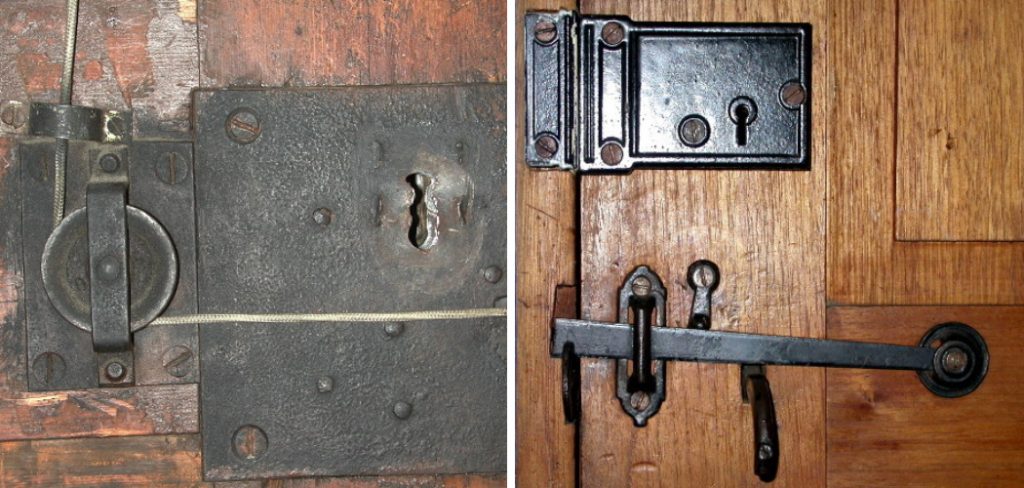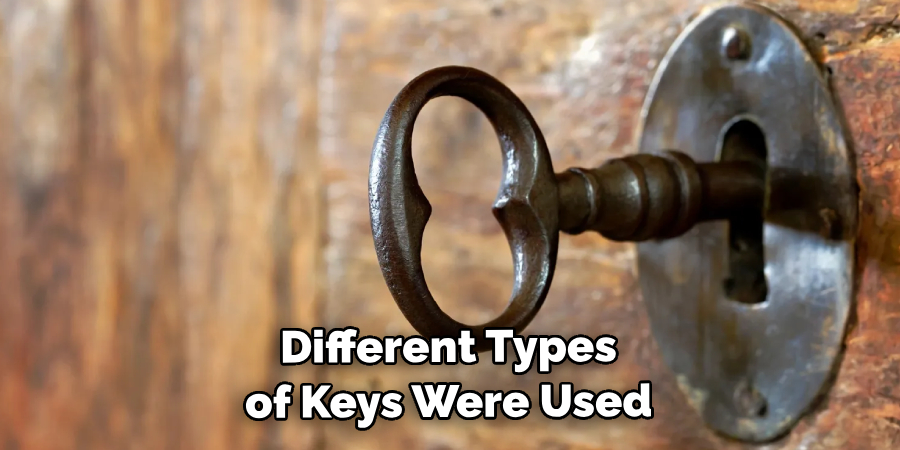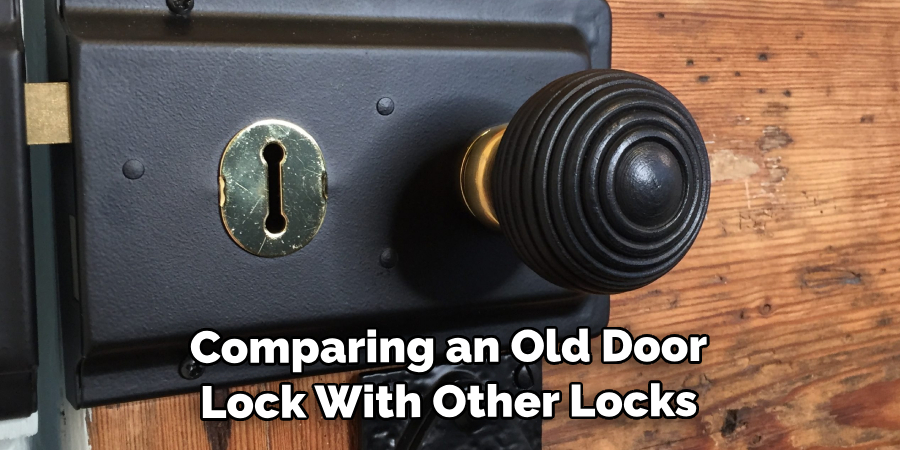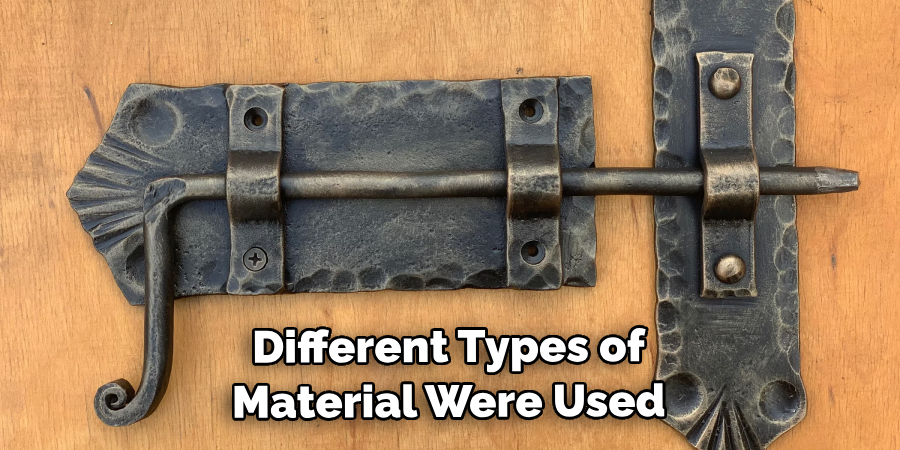Unlocking the mysteries of old door locks can be a fascinating journey into the past, offering a glimpse into the craftsmanship and security measures of bygone eras. Whether you’re a history enthusiast, a homeowner in a vintage property, or a locksmith faced with the task of restoring antique locks, the ability to identify and understand these time-honored security mechanisms is invaluable.

Old door locks come in a myriad of shapes, sizes, and styles, each with its own unique characteristics and quirks. Some may be beautifully ornate, while others are simple and utilitarian, but all hold a story waiting to be discovered. In this comprehensive guide, we will delve into how to identify old door locks, sharing insights into the evolution of lock technology, key design elements, and the significance of various markings or engravings.
Whether you’re looking to restore the authenticity of a historic home or simply curious about the locks of yesteryears, our exploration will equip you with the knowledge to unlock the secrets of these intriguing relics of the past.
The Importance of Identifying Old Door Lock Types
Identifying old door locks can be an important part of preserving the integrity and value of a home or other building. Knowing the type and age of the lock can make it easier to repair or replace if needed, as well as determine when additional security measures may be necessary. Additionally, it can help to ensure that all safety regulations are being met if the existing hardware is out of date or inadequate.
In order to identify an old door lock, there are several key elements that should be considered. The first is the appearance and material of the lock. Many older locks feature ornate designs and intricate details such as scrolls, bevels, and other decorative accents that can help in determining its age and origin.
Additionally, many older locks were made from brass, bronze, or other harder metals that are often more durable and long-lasting than modern options.
Another important aspect to consider is the mechanism of the lock. Many older locks feature mortise cylinders, which are large metal cylinders with several pins inside. These can often be identified by their shape and size, as well as the type of key used to operate them.
Additionally, other types of locks such as deadbolts, rim locks, and padlocks can often be identified based on the type of key and locking mechanism used.

The Significance of Recognizing and Understanding Old Locks
Identifying old door locks is not just a matter of historical interest: it can also be crucial for homeowners and property owners who are looking to secure their home or premises.
Understanding the types of locks that have been used in the past can help individuals choose more securely designed locks, and can provide a better understanding of the possible vulnerabilities in existing locks. Additionally, knowing which locks were used in the past can help individuals identify antique pieces and preserve them.
When attempting to identify an old door lock, it is important to start by looking at its design. There are several factors that should be considered when examining the design of a lock: the material from which it is made, its size and shape, and any markings or features that may indicate the age and manufacturer of the lock. Additionally, looking at the inside of a lock can provide clues to its purpose and history.
The key is also an important factor in identifying old locks. Different types of keys were used throughout different time periods for door locks; examining the shape, size, and design of a key can help to narrow down the age range of the lock. Additionally, any markings found on a key can provide clues as to the origin and purpose of the lock.

10 Steps How to Identify Old Door Locks
1. Examine the Lock’s Finish
The finish of an old door lock can tell you a lot about its age and origin. For example, if the lock has a dark patina on its surface, it is likely to be older than one with a bright, shiny finish. Additionally, locks from different parts of the world often have distinct finishes that can help you identify them.
2. Look for Maker’s Marks
Old door locks often have maker’s marks stamped onto them that can provide clues as to their origin or age. These marks typically appear on the face of the lock or on its backplate and may include symbols, letters, or numbers that indicate who made it and when.
3. Check for Patents
Patents are documents issued by governments that give inventors exclusive rights to their inventions for a certain period of time. If an old door lock has a patent number stamped onto it, this can help you determine when it was made and who made it. You can use this information to research the lock further and find out more about its history.
4. Observe the Type of Keyhole
The type of keyhole used in an old door lock can also provide clues as to its age and origin. For example, some older locks used skeleton keys while others used warded keys; these two types of keys are not interchangeable so if you know which type your lock uses, you can narrow down your search significantly.
5. Note Any Engravings or Decorations
Many old door locks have engravings or decorations on them that can help you identify them more easily. These engravings may include symbols or images that were popular at the time when the lock was made, such as flowers or animals; they may also include initials or names that indicate who made the lock or where it came from originally.
6. Inspect Its Construction
Inspecting an old door lock’s construction is another way to identify it more accurately; look closely at how many pieces make up the mechanism and how they fit together to form a working unit – this will tell you whether it was handmade or mass-produced and whether it is likely to be antique or modern in design.
7. Compare It With Other Locks
Comparing an old door lock with other locks from similar periods in history will help you determine its age more accurately; look for similarities in style, materials used, construction techniques employed etc., as these will give you clues as to when your particular lock was made and who made it too (if known).

8. Research Its History Online
Researching an old door lock online is another great way to find out more about its history; sites such as eBay have vast collections of antique locks available for sale which can be searched by manufacturer name/location/date etc., allowing you to compare your own item with similar ones from around the world quickly and easily without having to leave home!
9. Ask Experts for Help
If all else fails then asking experts for help is always a good option; there are many online forums dedicated to antique locks where knowledgeable members will be able to provide valuable advice based on their experience with similar items over many years – don’t forget though that opinions vary greatly between experts so take any advice given with a pinch of salt!
10. Consider Professional Appraisal
Finally, if you want absolute certainty then considering professional appraisal is advisable; although this may cost money depending on who does it (and how much work needs doing) at least then you will know exactly what kind of item your old door lock is and how much its worth too!
Things to Consider When Identifying Old Door Lock
- Type of Lock – Identifying an old door lock requires examining the type of lock it is. For example, mortise locks are one-piece locks that fit into a pocket cut into the edge of the door, while rim locks attach to the surface of the door.
- Material – Different types of material were used for different lock types and eras. Brass and steel were used for locks in the 1700s, whereas Art Deco locks generally use zinc alloy or brass.
- Manufacturer – Different manufacturers made different types of locks, so it is important to take note of any identifying marks on the lock that might be a logo or other branding element of the manufacturer.
- Age – The age of an old door lock can be identified by looking for visible wear and tear, or any signs of rust or corrosion. If the lock is very worn, it may have been in use for a long time.
- Condition – It is important to inspect the condition of an old door lock to determine whether it is still functional or if it needs to be replaced. If the mechanism of the lock is still intact, a locksmith may be able to repair it or replace parts.

Conclusion
In conclusion, understanding how to identify old door locks is an essential skill for any homeowner. It requires a careful attention to history, tradition, and design. It can be difficult, but with the right tools and techniques, it doesn’t have to be impossible. Getting started is easy: begin by consulting experts in the field and obtaining resources like books and catalogs that will guide you through the identification process step by step.
Once you have correctly identified your lock type and style, you can start learning about preservation techniques to make sure it lasts for years into the future. Remember: there’s no substitution for knowledge when it comes to antiques!

